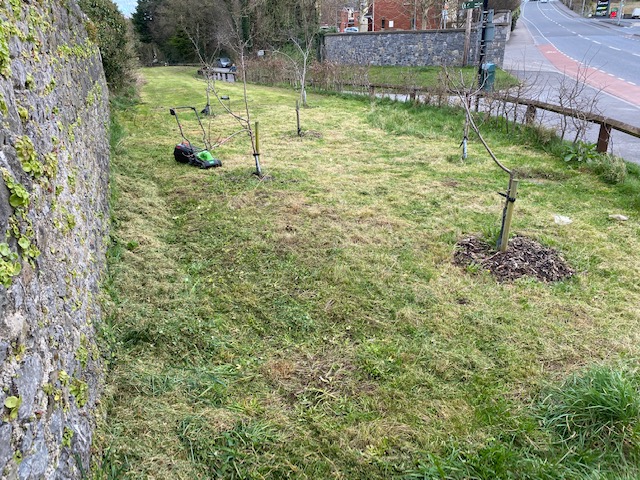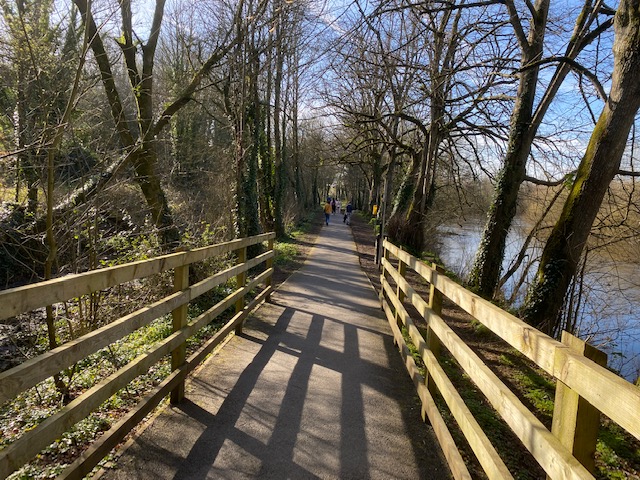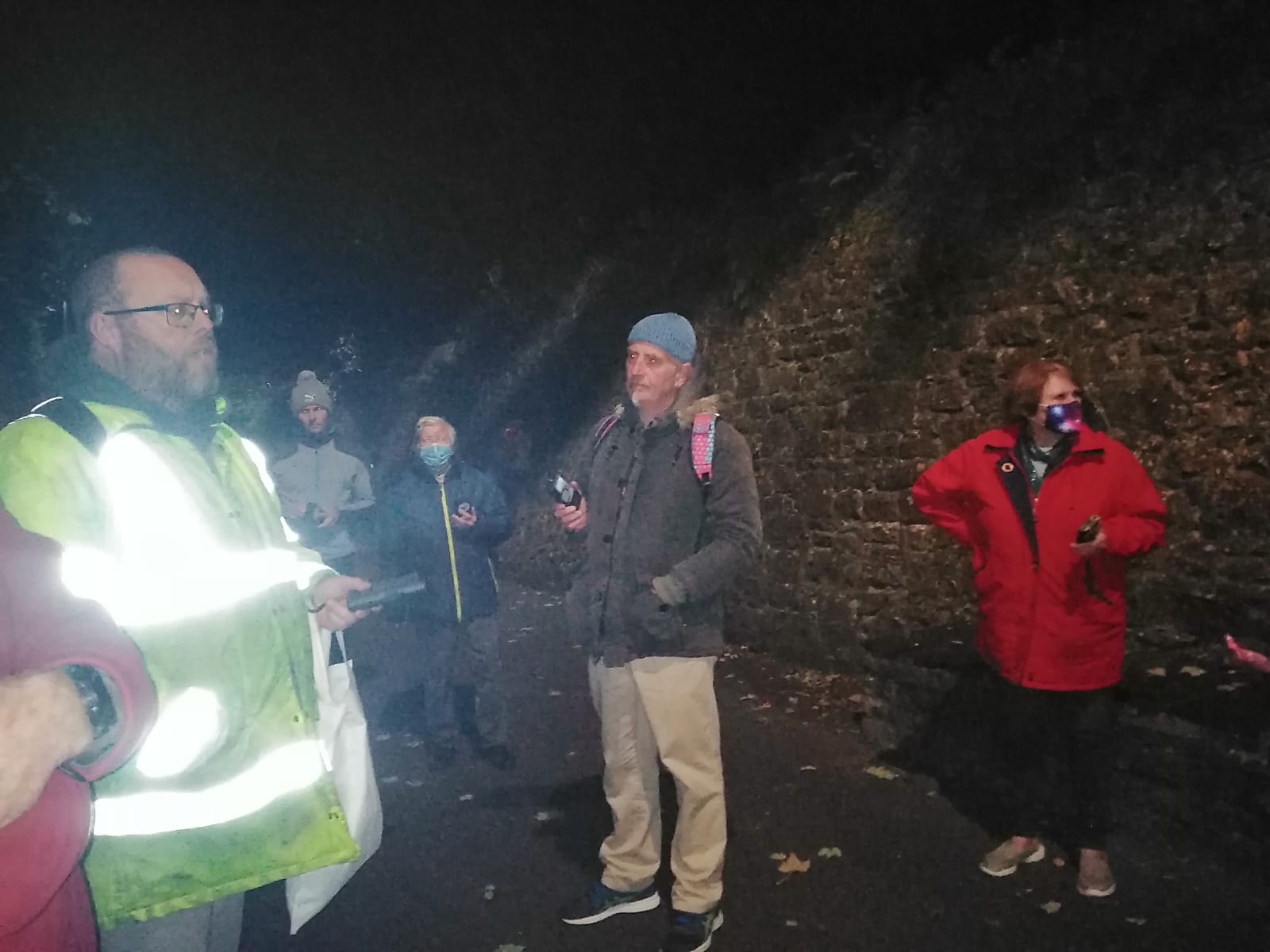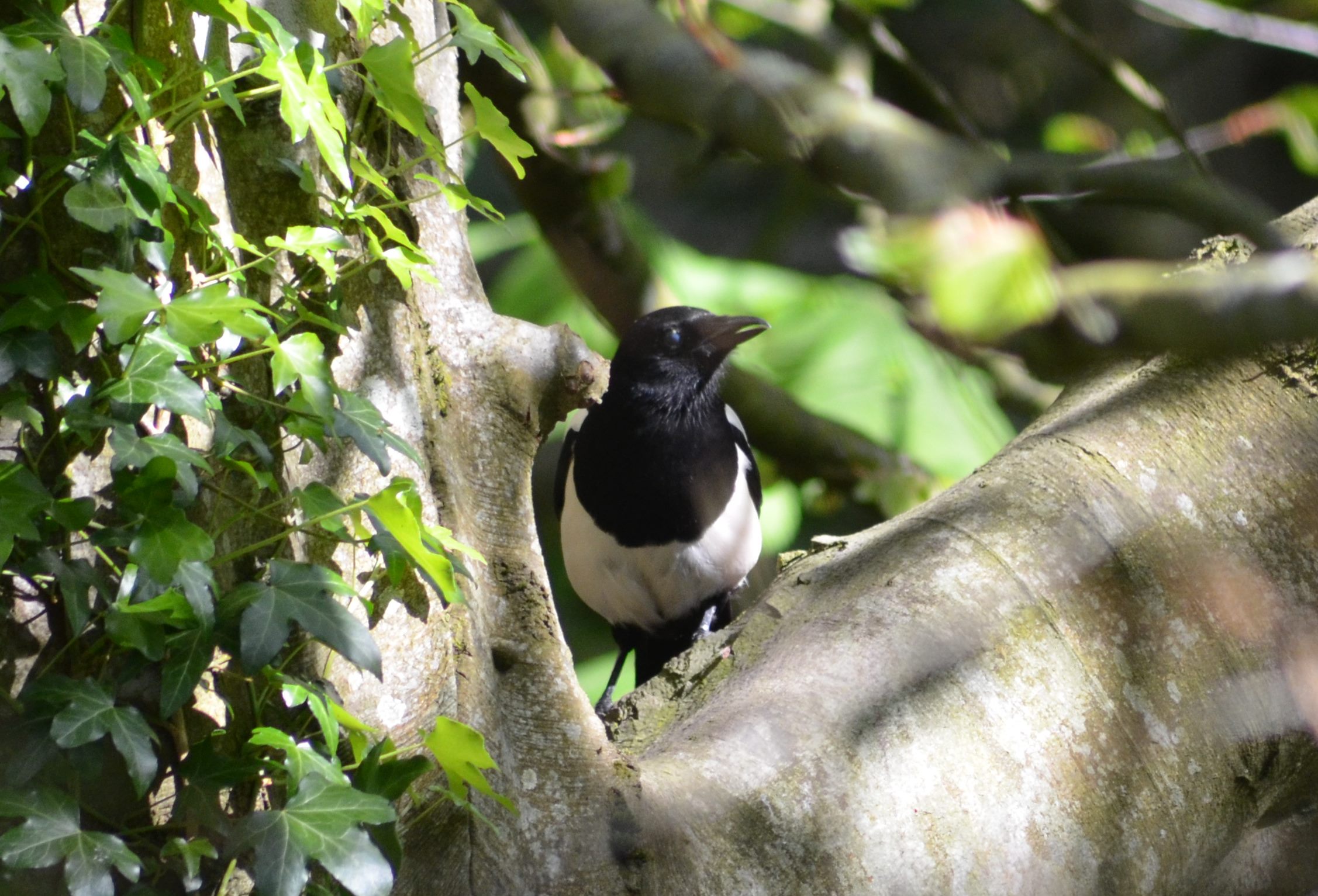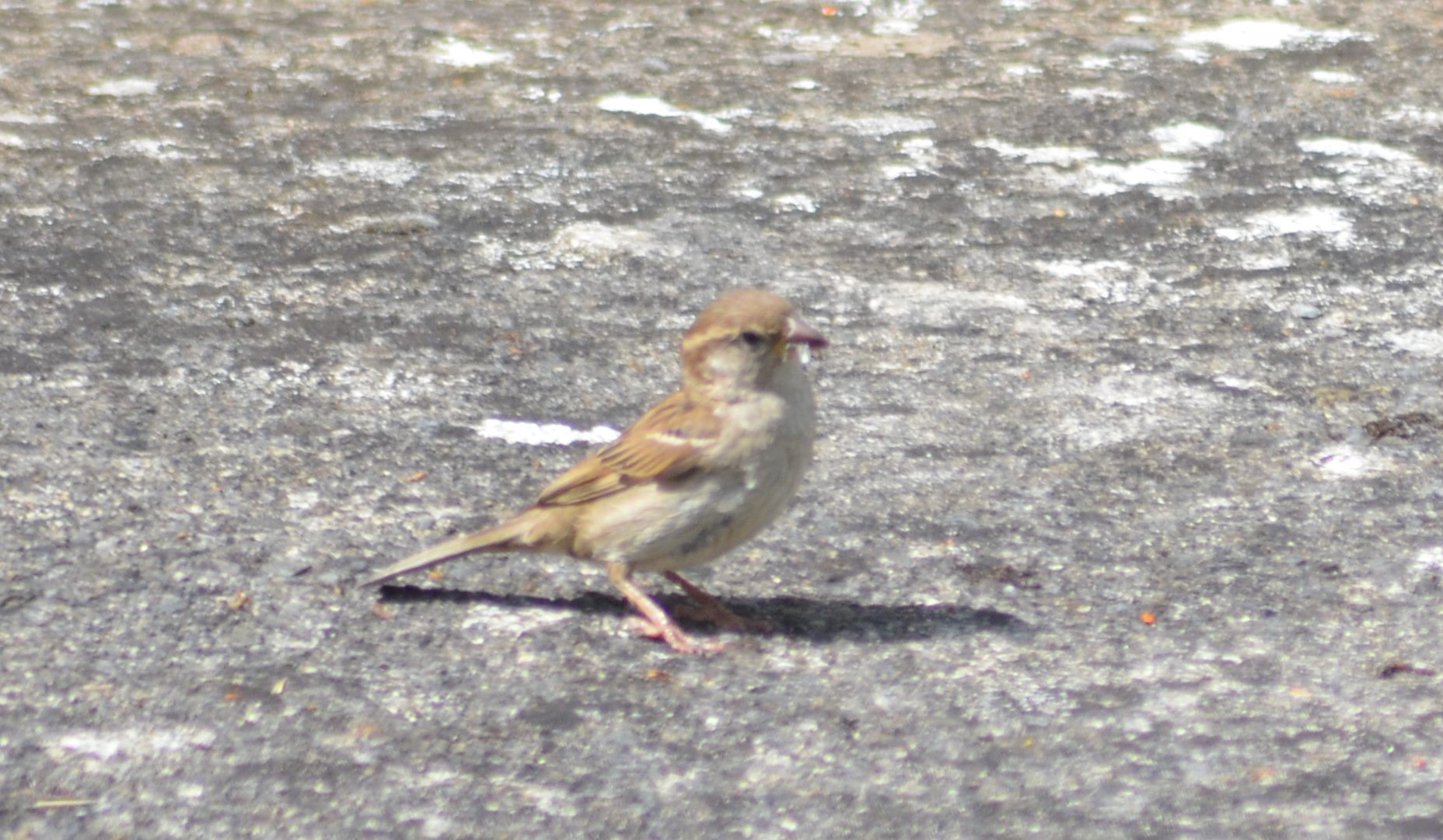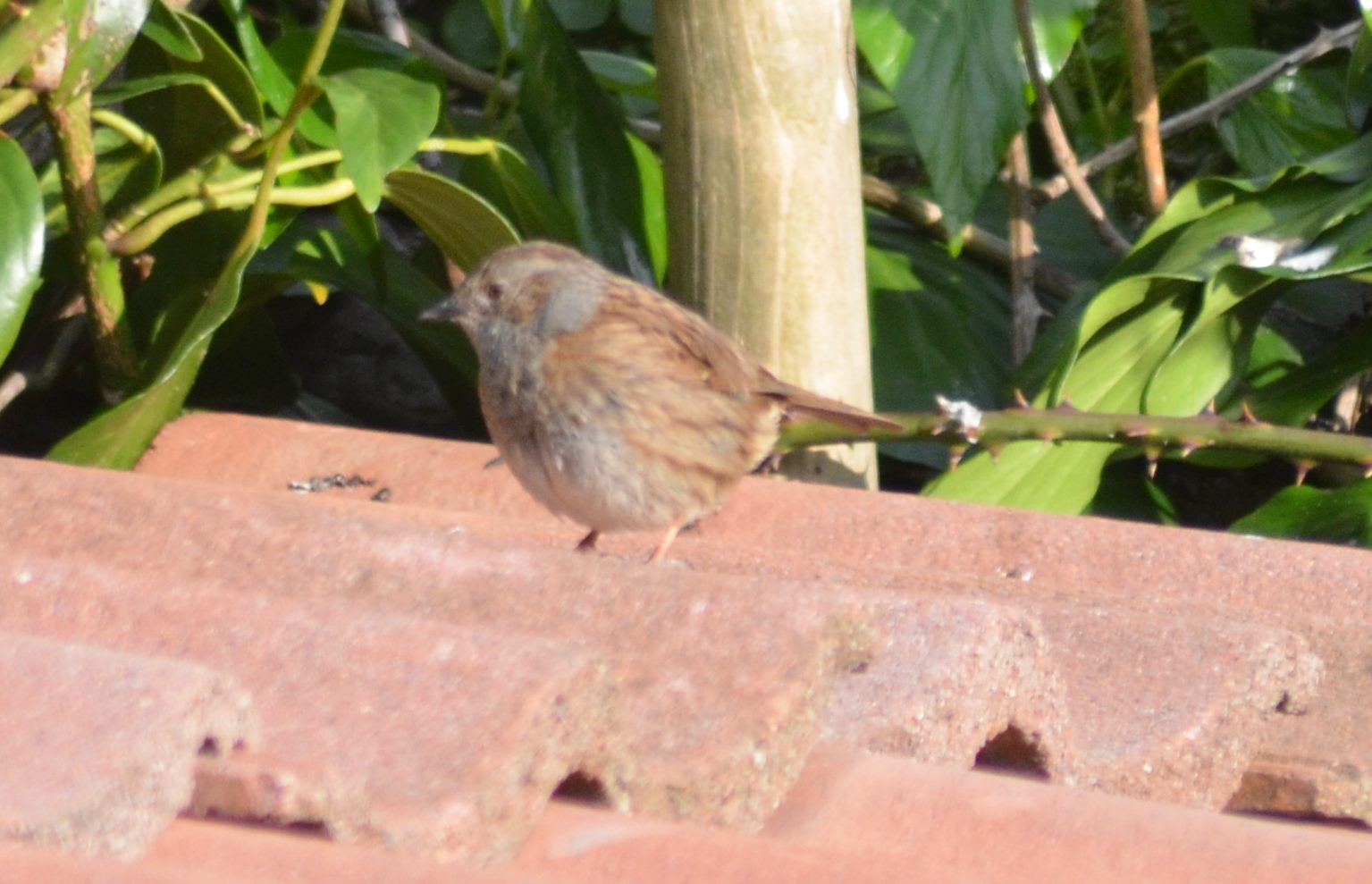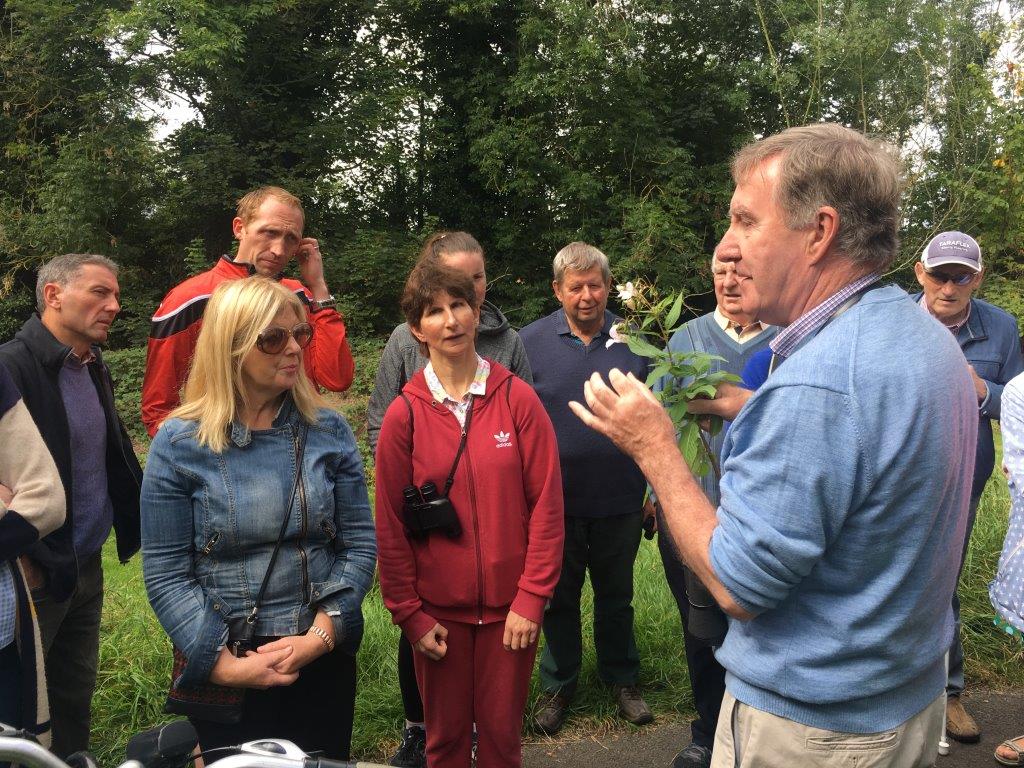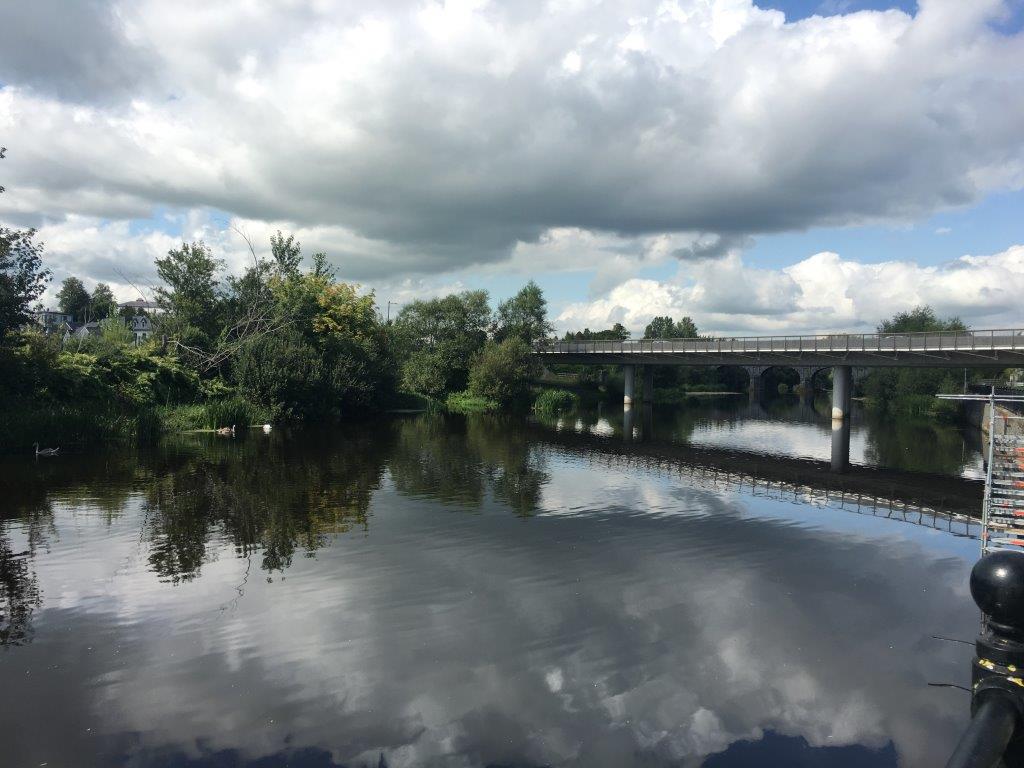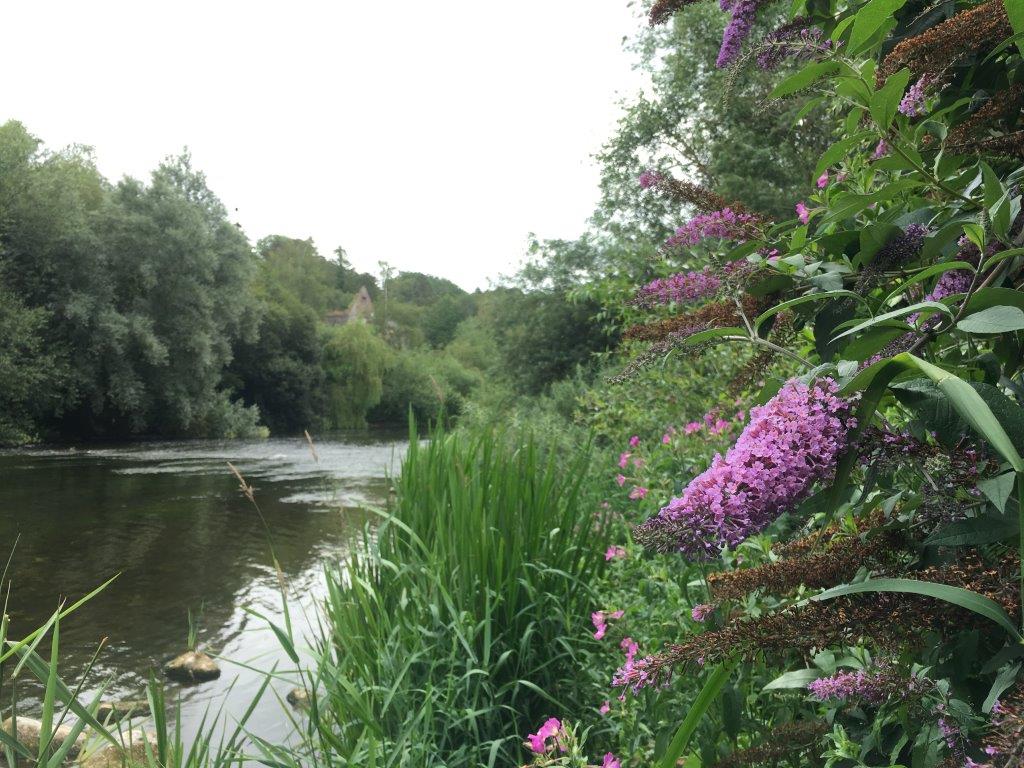A lot can happen with social distancing restrictions and a 5km limit. In the last few days the grass has started to grow the tree and fruit  buds are getting greener and the birds are getting more vocal. The last of the tree slips are getting planted and the community orchards and fruit planting is ongoing. The Acorn project is going ahead full steam with the Kilkenny Forrest School. Why not join in and help with Keep Kilkenny Beautiful.
buds are getting greener and the birds are getting more vocal. The last of the tree slips are getting planted and the community orchards and fruit planting is ongoing. The Acorn project is going ahead full steam with the Kilkenny Forrest School. Why not join in and help with Keep Kilkenny Beautiful.
Category Archives: Wildlife
Annual bat study in full swing
Shining a light on bats.
The sun had been out all day and in the dwindling light I met up with Kilkenny tidy towns for a bat walk. Our meeting place was in front of the Hurling Statue, with the high walls of the castle above us and the broad sweep of the River Nore inviting us to discover nature. On first view this looked like an excellent habitat to discover bats.
The walk is a well-used meeting point for the community. A few people were heading off on an evening stroll, while kids played on their skateboards while under the watching eye of their parents.
Soon a small and socially distanced group has assembled. Two ladies arrived late as Johns Street was closed and they had to take a longer route. 
We started off with an introduction to bats. Bats are mammals like us. They are warm blooded and give birth to live young that are fed on milk. Bats are often found in our houses and one of the main reasons for this is the massive changes in our landscape.
In other parts of Europe bats use old trees with natural cavities and these are rare in Ireland. Also a lot of older buildings that are natural bat roosts have been renovated so use our attics instead. One man commented that he had bats in his attic years ago but they moved on of their own accord. Attics are especially important as maternity roosts where the females will have their one pup.
Bats have a very slow rate of reproduction and this means that it takes years for the population to build up. Bats mate in the autumn, but the female can delay fertilisation till spring. With plenty of insects around she can produce milk for her pup. Bats can eat up to 3500 insects each night and moths, mayflies and beetles are also caught.
Bats are fully protected by Irish and European law and it is illegal to disturb their maternity and roosting places. If you do need to carry out works, consult with the local wildlife ranger and they can offer sensible and practical advice on how the works can be carried out.
There are many myths around bats and they are not flying mice and don’t fly into your hair. When we are out walking we radiate heat from our head and also breathe out Carbon dioxide. This attracts insects and the bats fly around us trying to catch them.
Before we started the walk I demonstrated how to use a bat detector. This converts the normally inaudible calls of a bat, into a sound that we can hear and with a bit of experience identify the specie of bat. Thanks to Kilkenny Co.Co for providing additional detectors and this meant there was one for everyone in the group.
This is a tense moment for me as bats on occasion have not performed for a group. Thankfully we were blessed and it was not long before we heard the first of many bats. When bats first emerge they are starving and there is also loads of banter as they discuss where the best feed spots are.
The calls of the Common pipistrelle came through very clearly and everyone was really excited to hear the bats. Occasional we saw a bat and many commented that they will never view the walk in the same way again, after experiencing the thrills of bat watching. After a few minutes the activity level dropped off and this is natural, as bats disperse to wider feeding grounds.
While we waited we discussed the best place to put up a bat box. Boxes should be located at least four meters of the ground with no obstructing branches that will hinder the bats flying in. While birds have the ability to fly straight out of a box, bats have to drop down making them vulnerable to attack by cats. Other dangers is the long term Impact of powerful lighting that drives away bats. This is especially true on old bridges and churches and who is going to be looking at them at 3am. Thankfully the canal walk is well balanced in terms of lighting. Habitat loss like the removal of hedgerows destroys the bats green highways.
Bats are not blind and there eyesight is as good as ours during the night. Bats use echolocation to build up a picture of the night-time landscape. This allows then to hunt tiny flies and larger moths in the pitch dark. But insects like moths are not passive prey and each year an evolutionary arms race goes out in our gardens and towns. Bats can live for up to 30 years and with age they become more experienced hunters. Moths defences are constantly been upgraded. The hairs on the bodies of some species can sense the echolocation calls of the bats. The moth can then drop like a stone to the ground to escape or distort the bats signal. The worrying decline in insect populations is a major concern for the future health of bats. Leisers bats are Ireland’s biggest species and we did hear the social and mating calls of the males in the trees above the heads. These were located near the love seats built into the walls long the canal walk for human occupation.
On the way back we examined the plant community growing on the walls. Navelwort, Pellitory of the wall and ivy leaved toadflax all support wildlife. Dog rose, ash, Horse chestnut and lime trees lined the path and can be home to roosting bats especially if they are covered in ivy. Bats are interesting part of Kilkenny City wildlife and I really enjoyed discovering them on the walk.
Comments/Questions to albert.nolan@rocketmail.com or 089 4230502. Albert is also available to give walks/talks to schools, tidy towns, youth and community groups.
a walk along the river Nore
A year in the life of a Wild flower Meadow
Summer bounty in Kilkenny
With delicious wild cherries, blackcurrents and strawberries, and many wild flowers the summer can be enjoyed in Kilkenny
See also our facebook page also if you want to join our biodiversity group why not contact us.
e-mail mail@keepkilkennybeautiful.com or via facebook click here to link to KKB facebook page
Balsam removal continue with great success
Balsam removal continues throughout the Nore Valley basin and in particular in the Kilkenny city area with large numbers of volunteers taking part over the last number of weeks.
Extensive new areas which have not been previously cleared are now being declared balsam free for 2020. The main aim is to remove plants prior to flowering so that the seed is not available for 2021.
Congratulations to all the volunteers who are taking part. See also our Facebook page with details of the various events taking place.
Wild birds in our city to enjoy
Some of the birds locally enjoying spring
River Nore top of class in IBAL 2019 report
Good news received in relation to the river Nore. Kilkenny is top of Class with “Clean to European norms”. this is an excellent result for Kilkenny in the IBAL river review.
Citation:-
River Nore – Kilkenny: This was an excellent site in terms of overall presentation and litter. There was a virtual absence of litter throughout the area surveyed and this was particularly good considering the high numbers of people. Evidence of cleaning at time of survey. Kilkenny River Nore (Kilkenny) – Clean to European norms
KKB are very proud of the success of the work along the River undertaken this year.
This success reflects on the excellent work being undertaken in conjunction with the Kilkenny Sub Aqua Club, Kilkenny aqua canoe club, Dragon boats, Kilkenny county council and other groups
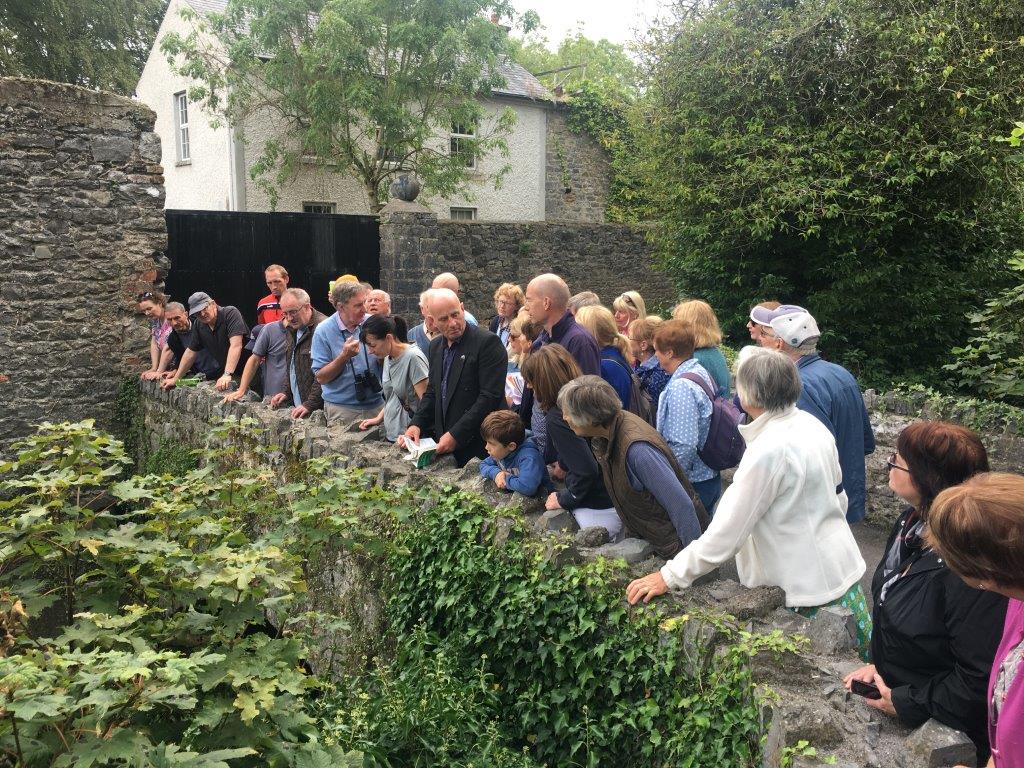
Pat Durkin of Birdwatch and Pat Boyd biodiversity officer KKB lead Heritage week Water Heritage day nature walk on Canal walk
Water Heritage Day
Celebrate Water heritage day ( Sunday 25th August 9.30am) meet at Canal Square! All are welcome. Bat Boyd chairman of KKB environmental sub committee and Pat Durkin of Birdwatch Ireland Kilkenny lead a biodiversity walk along the river Nore. Experience the beautiful flora and fauna of the river Nore which flows to the centre of Kilkenny city. The results of the extensive removal of invasive weeds including Himalayan balsam will also be reviewed.
There is a lot of interest along the river bank and will also review Alien Invasive Species, non natives, indigenous species and endangered species in the context of our riparian biodiversity. These include the grey squirrel , mink, signal cray fish, mitten crab, and our most recent invasive water mold asphonomyces astaci ( white claw cray fish plague).
We will also talk about immediate threats from the mollusks kingdom Asian Clams and Zebra Mussels.
Plants to be reviewed include the Impatiens glandulifera not to be confused with our native Heracluem Sphondaelium ( cow parsley) and Heracleum mantegazzianum (giant hogweed).
We will also be looking at winter heliotrope and other invasive’s present from the Gonnera family. Non-natives but not invasive’s such as the sycamore , horse chestnut and rye grasses as well as native sedge’s.
It will be great fun hope to see you there Email us at mail@keepkilkennybeautiful.com or ring 086-1075532 to be put on out text list and to get further details of our environmental actions and clean ups.



